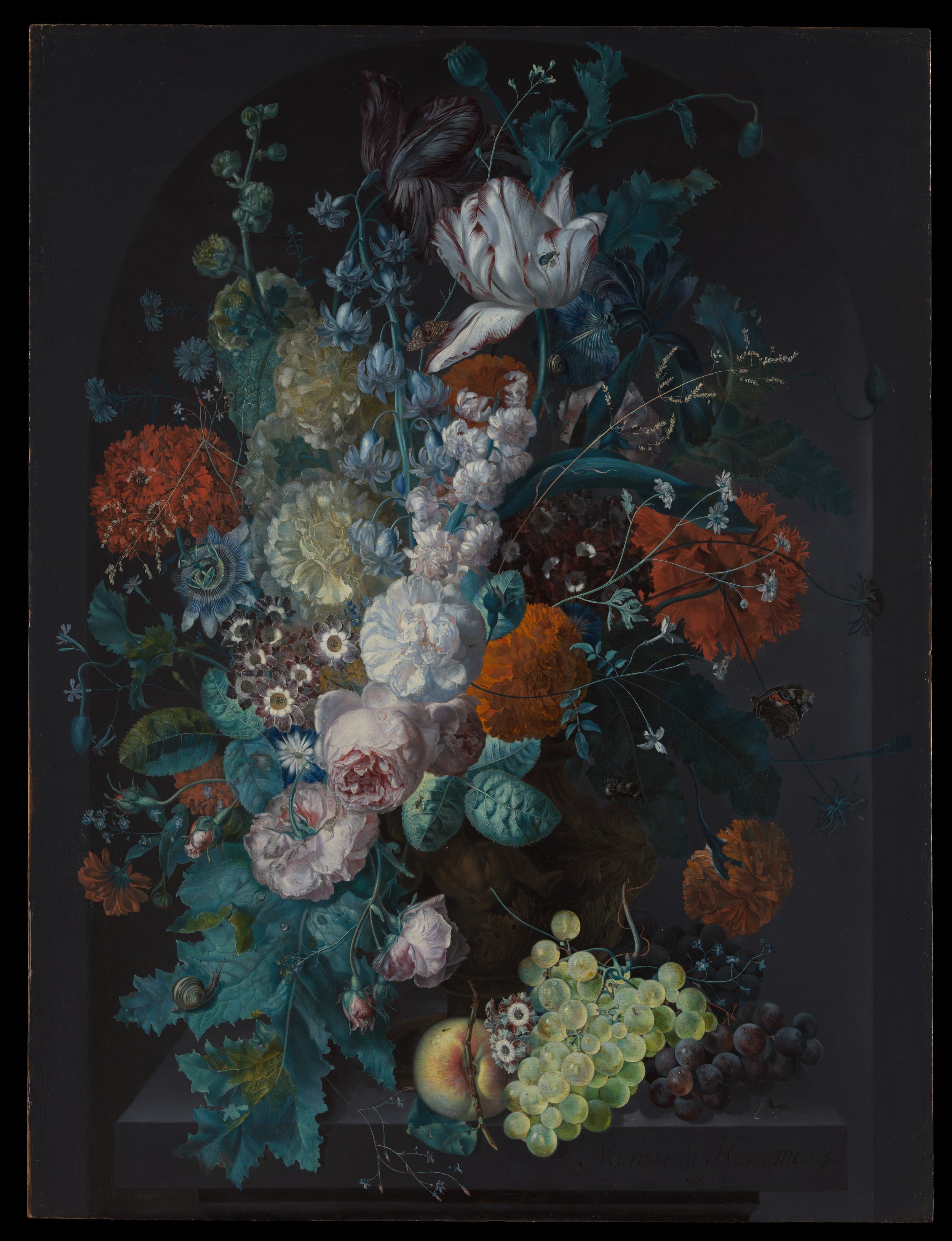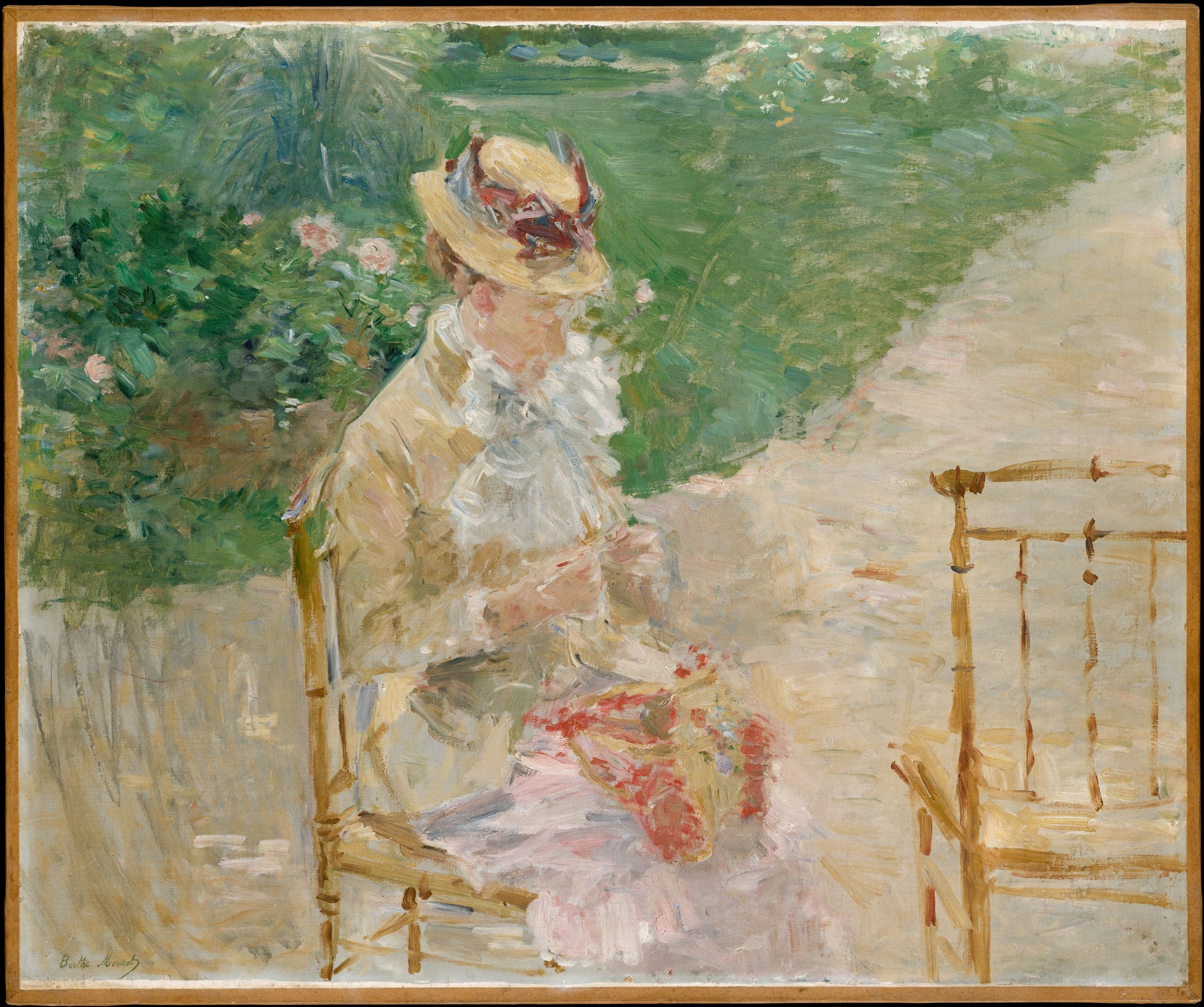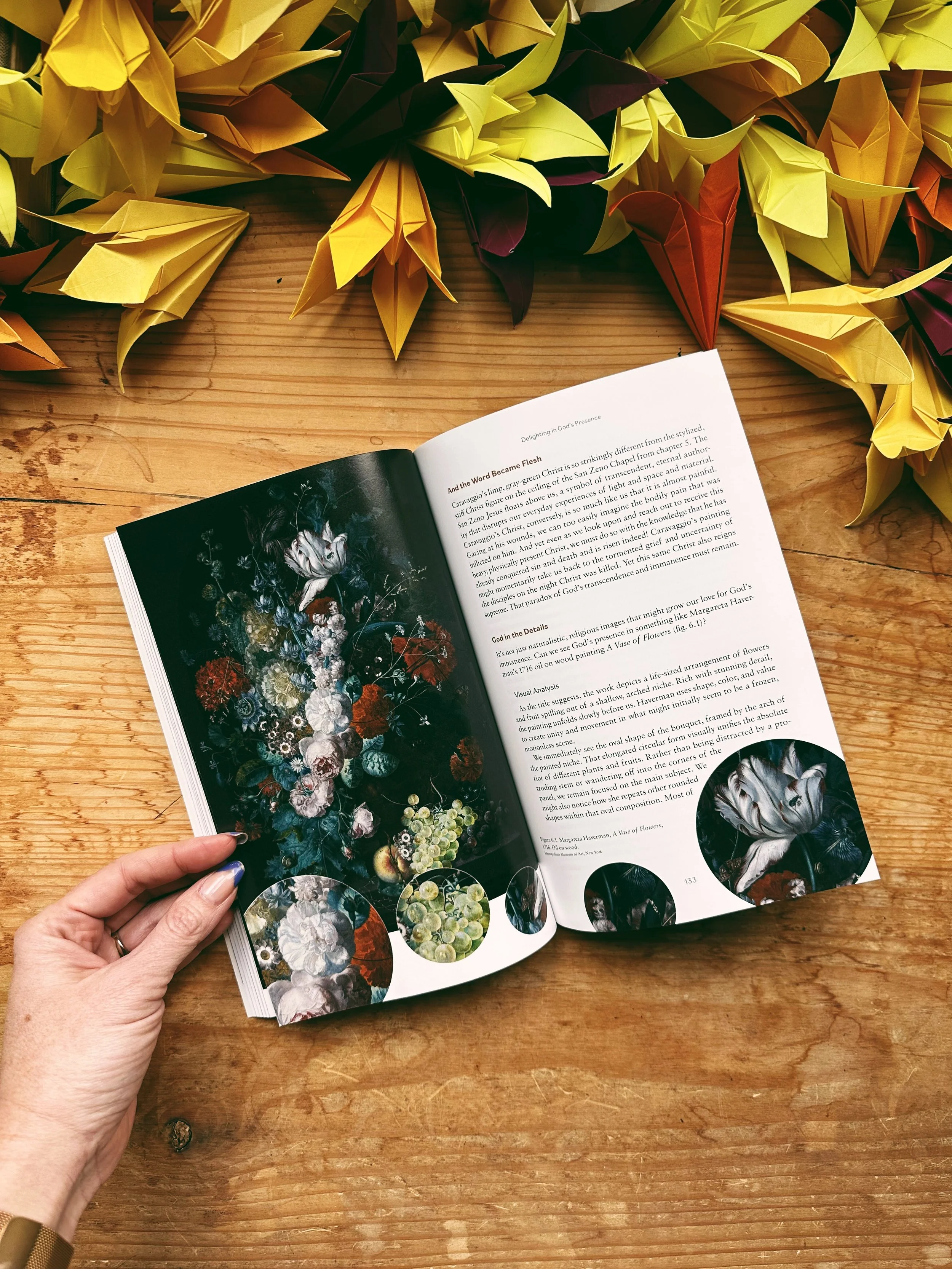Slow Read: Week 7
Representation & Delighting in God’s Presence
Matter Matters
This week you’ll read the final chapter in Part II: “Delighting in God’s Presence: Representational Art” and you’ll hit the halfway point of the book!
I packed this chapter full to the brim. We return to Caravaggio’s Deposition from Chapter 3, then look at Margareta Haverman’s exquisitely detailed floral still life, Berthe Morisot’s loosely gestural painting of a woman knitting, and, finally, a 19th century American patchwork quilt. We can grow in our love for God by giving attention to the created world but also delighting in our own making as image-bearers. As the chapter shows, I’m curious about the variety of ways that we, like Brother Lawrence, can practice the presence of God, because he is nearer than we think.
I really loved writing the visual analyses for Haverman’s “Vase of Flowers” and Morisot’s “Young Woman Knitting.” They are both oil paintings, but the artists handle the medium in strikingly different ways. Describing that was a delight. And still, both women let us know that these are THEIR creations. Haverman does so through her tromp l’oeil signature and her choice of flowers. She calls attention to her presence, reminding us that we are looking at a made thing, not a natural occurrence. Morisot, likewise, announces herself through her virtuosic brushwork. Each mark reveals a bodily gesture. Instead of blending the paint away, she lets evidence of her own physicality remain.
Behind in the scenes in this chapter is my decision to use art by made by artists who were women without making their gender the main focus of the discussion. I could have easily used paintings by “canonical” artists like Jan de Heem (17th century Dutch still life painter) and Claude Monet (19th century French Impressionist painter) to make similar points. But as I said in the introduction, I was not interested in writing a “50 artists every person should know” or a “10 greatest masterpieces” book. I wanted to write a guide to looking at whatever you see, rather than only caring about the things a PBS special or a big art history textbook has told you that you “should” care about.
And that seemed like an especially important choice for a chapter on art that can remind us of God’s presence in the world. It’s also why I chose to highlight objects made for everyday use in the “For Further Looking” section. Certainly there are other examples and other museums that have these art forms in their collection. But I tried to direct you towards online collections that also provide additional historical and cultural context.
Side note: can we take a moment to appreciate the beautiful layout for the spread in Redeeming Vision with the Haverman canvas? The book’s designer, Brian Brunsting at Baker Academic, did a fantastic job. I love the little detail bubbles. Doesn’t it make you want to go zoom in all over the place?
To be honest, A Vase of Flowers was perhaps my surprise favorite in writing the book. I’ve long preferred conceptually driven, materially disruptive artworks over conventional oil paintings. But the more time I spent with Haverman’s painting, the more I found to love. Her delight is infectious. “Pay attention,” she says, “to the yellow meadow ants, garden bumblebees, and blue bottle flies.” Be attuned to the sparkling prisms of dew and the delicately fringed edges of marigolds. Wonder at the strange, spidery center of the passionfruit flower. Haverman’s close attention to creation encourages us to do the same.
Haverman turns her looking into making with this richly detailed painting. We can imagine the time it took for her to study specimens, to build up layers of paint, and to attend to each curving stem and petal. Her regard for her flowers and snails and grapes is a dim but helpful shadow of God’s deliberate attention to us in this world. Each of us, and all that surrounds us, is made, the result of God’s abundant, generous love.
And of course, none of this needs to stay confined to just art. Instead, learning to look redemptively at art can shape how we see everything. How can you be attentive to the presence of God in the everyday, the particular, and the mundane this week? I’m planning to go contemplative color walking.





